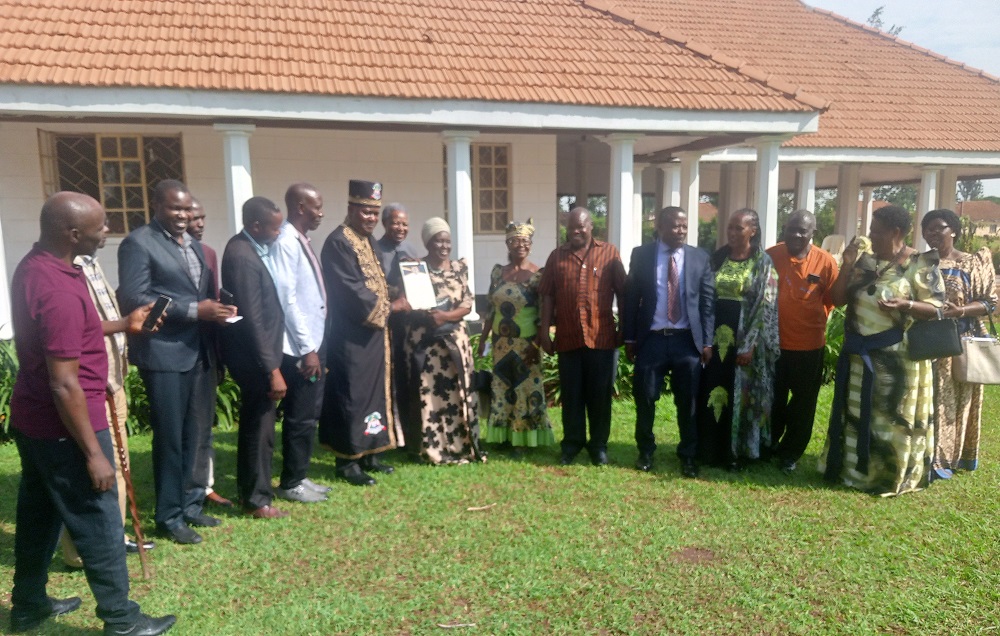By Steven Masiga
Recently, DailyMonitor’s Gillian Nantume chronicled the role that the Bunyoro Kingdom played in the education of one of its subjects, Madam Florence Mugasha. She rejected the opportunity to attend the University of Dar es Salaam for personal reasons and thus missed out on government sponsorship in the late 1960s.
Another notable beneficiary of the Bunyoro Kingdom’s benevolence was young Rwamirimo Nkurekenda, who received an educational scholarship in the 1930s. After completing his university education, he expressed his gratitude to the kingdom for funding his education by composing the current Ekizina ky’ihanga ya Bunyoro (the Bunyoro cultural anthem) at no cost. Nkurekenda later pursued his studies to the level of a doctorate and served in various capacities in Uganda.
I have yet to reach out to Madam Catherine Hayiga, who composed the current Inzuyamasaba anthem, to find out whether she received any educational support from the Bugisu Cooperative Union (BCU), which used to sponsor many learners in the 1960s and 1970s before its current moribund status regarding educational sponsorships.
The Bamasaba people, now with an infant cultural institution barely 14 years old and lacking robust sources of income, originally began as an artificial entity. Many Bamasaba individuals are asking on various platforms about the plans the cultural institution has in place to support over 1,000,000 learners—children from Masabaland at various levels, from nursery to secondary and tertiary institutions—who are reasonably spread across the country.
Umukuka III of the Bamasaba people, His Highness Jude Mudoma, has a broader vision for the learners and is determined to ensure that all learners are supported by the cultural institution through scholarships and bursaries. Umukuka III has expressed his admiration for the efforts of the Bunyoro Kingdom in the education of its subjects, stating that we must be ready to complement government efforts, assuring that all Bamasaba learners will receive scholarships, with a formula already in place. He emphasized this during the launch of the Nabajerema Foundation.
Education officers in the Bugisu region have also done commendably in ensuring that learners are in class and teachers are at their posts by 7 AM, as dictated by government policy. Statistics from Mbale DLG, Bududa DLG, Namisindwa DLG, and Manafwa DLG are impressive. Many of these district education officers are experienced educationists due to their previous roles as teachers, such as Madam Lydia Musungu of Mbale and Madam Betty Khainza of Bududa, among others.
Cultural institutions must establish necessary global links and connections to secure the resources required to support education. The Bugisu Cooperative Union (BCU), which previously supported education in Bugisu, is no longer doing so, having followed a political path regarding the distribution of meagre scholarships.
Insiders report that the current sponsorships disbursed by the cooperative union are insufficient; on average, each applicant receives only about 200,000 shillings, which is hardly enough to cover living expenses for an entire month.
Hon. Irene Khainza, a minister in Inzuymasaba and former RDC of Manafwa, noted that in the past, beneficiaries of the Bugisu Cooperative scholarships received fully paid scholarships rather than just caution money. The cultural institution needs to follow up with unions like BCU so that a more neutral organization like Inzuymasaba, which is a cultural institution, can distribute these scholarships instead of them being routed through the union, where bias may influence distribution based on political affiliations.
The cultural institution will work closely with public universities like Makerere University, Kyambogo University, Gulu University, and Busitema University, as well as private universities like UCU, Lira University, and KIU to facilitate scholarships on behalf of the Bamasaba. This could prove more effective than local governments.
The institution maintains a database of about 100,000 learners per district, and this number typically increases year after year. For example, Bududa District alone has approximately 70,000 learners in nursery, primary, and secondary schools, both government and private, not counting those in universities. On average, each district has between 70,000 to 100,000 learners.
The cultural institution must support the enormous achievements that the government has made, especially for those attending tertiary institutions. Inzuymasaba must and will support these learners with fees and other needs, provided the resources allow.
It is not just about the institution’s prominence; it is about demonstrating the ability to elevate education to another level. We need to produce individuals like Florence Mugasha and Dr Nkurekenda, as Bunyoro has done.
The writer is the spokesperson for the Bamasaba Cultural Institution. Tel: 0782231577
Do you have a story or an opinion to share? Email us on: [email protected] Or join the Daily Express WhatsApp channel for all the latest news and trends or join the Telegram Channel for the latest updates.

